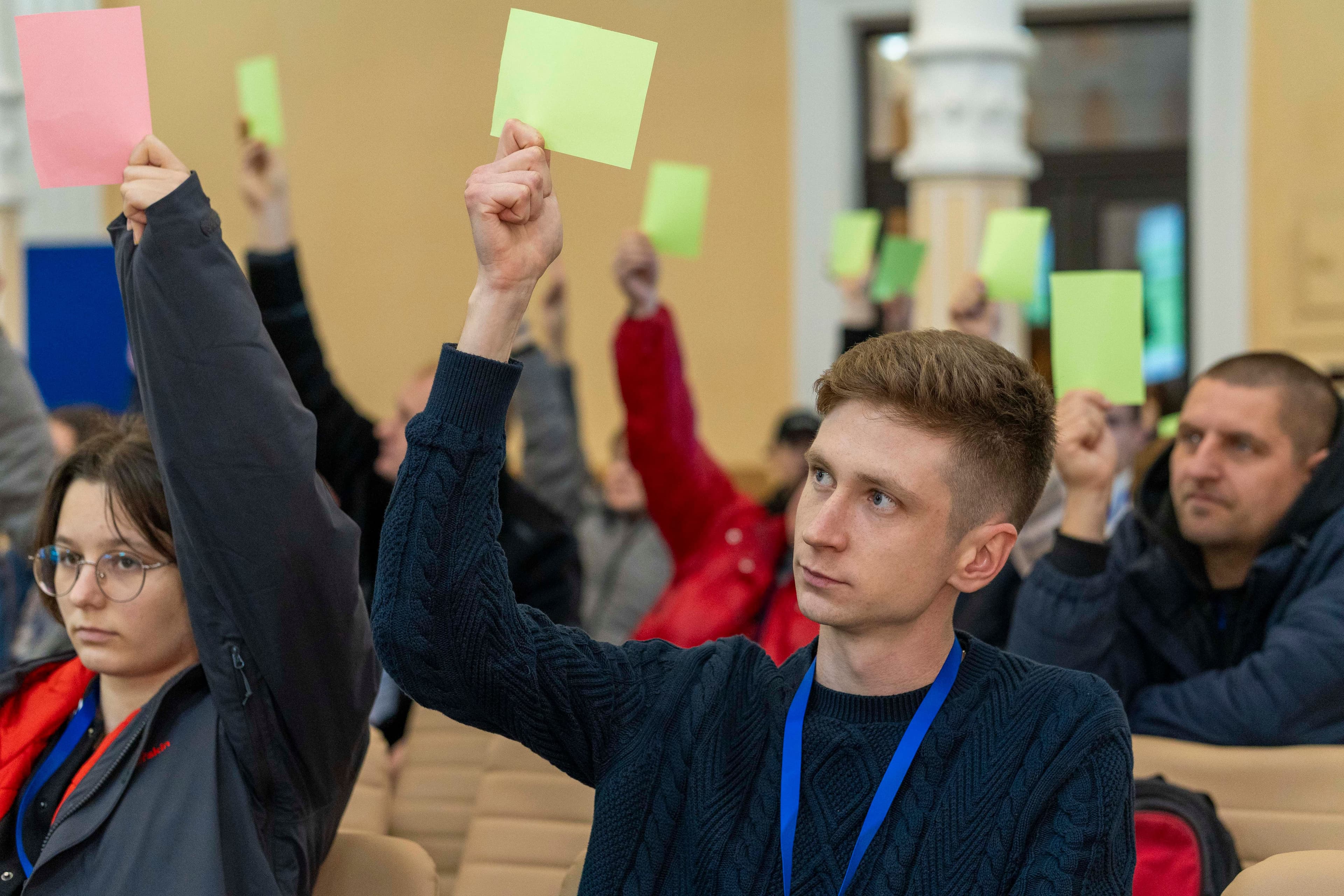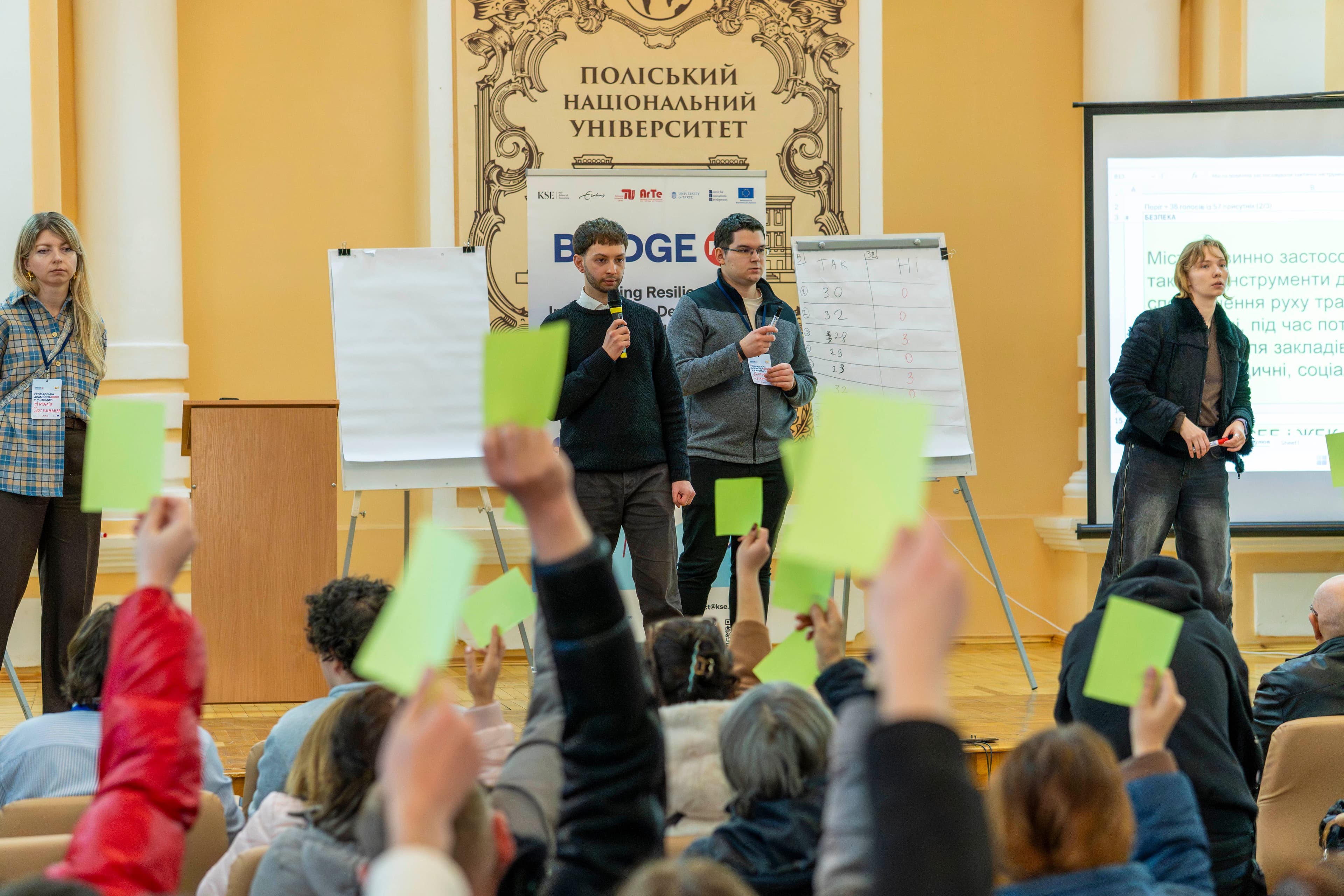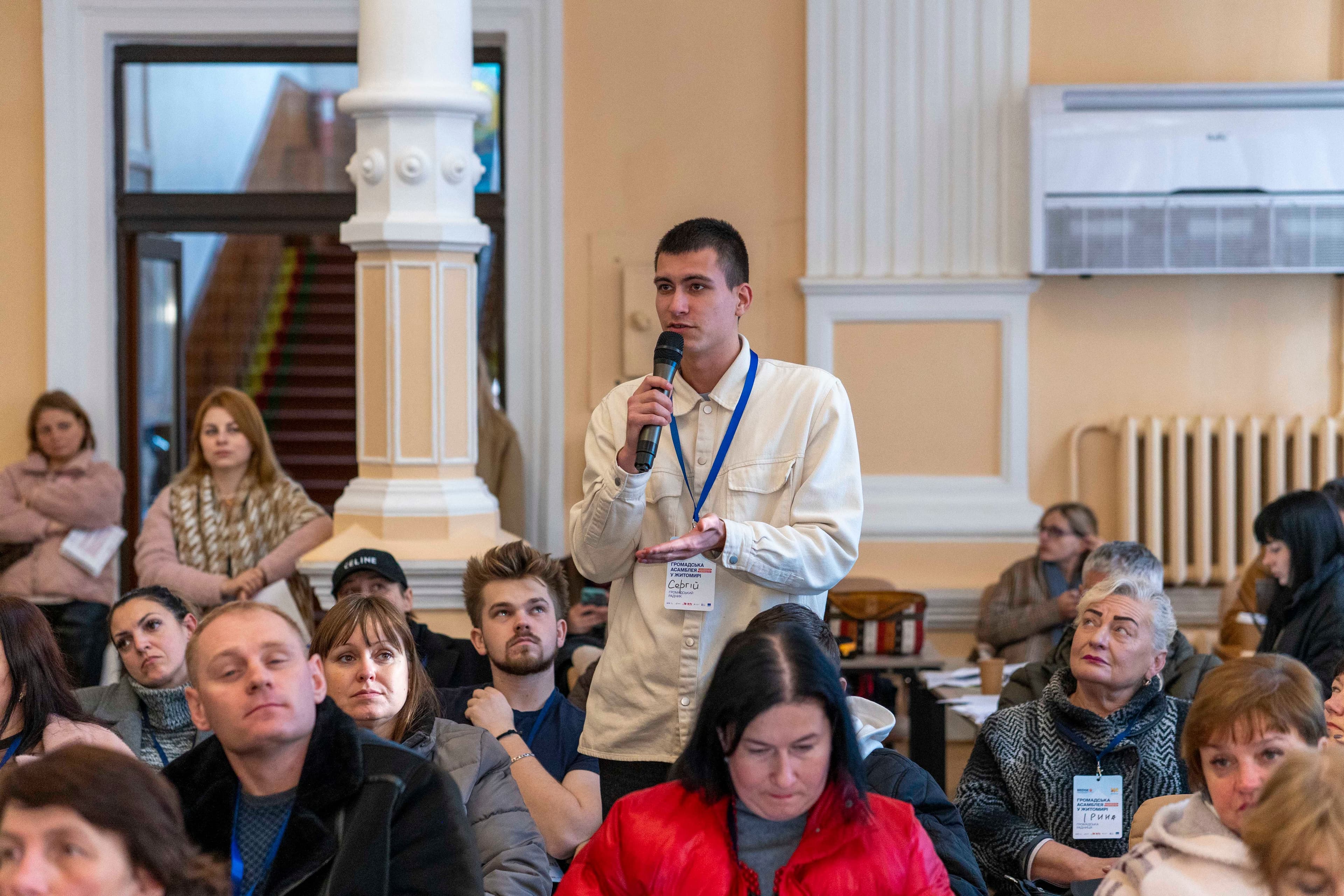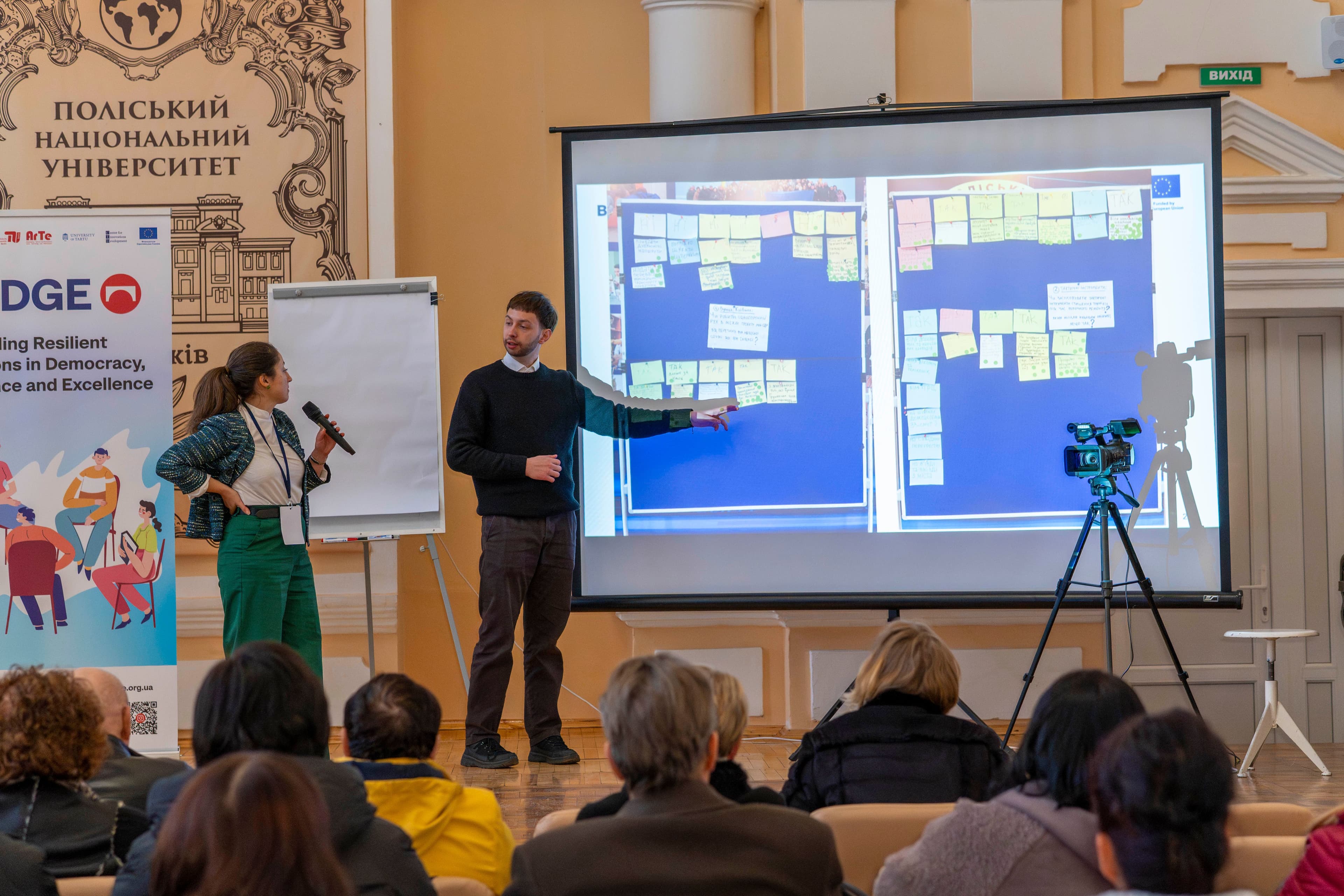Citizens’ Assembly in Zhytomyr: how residents developed recommendations for sustainable mobility and the city’s transport infrastructure
A platform for thoughtful discussions that brought together city residents, experts, and representatives of the City Council around the topic of developing transport infrastructure.

Over four days (October 25-26 and November 1-2, 2025), participants of the Citizens’ Assembly jointly sought answers to the question: What should a comfortable, safe, and accessible movement around the city look like?
Participants of the Citizens’ Assembly – community advisors – were selected at random from among residents of different districts, ages, and professions within the Zhytomyr community.
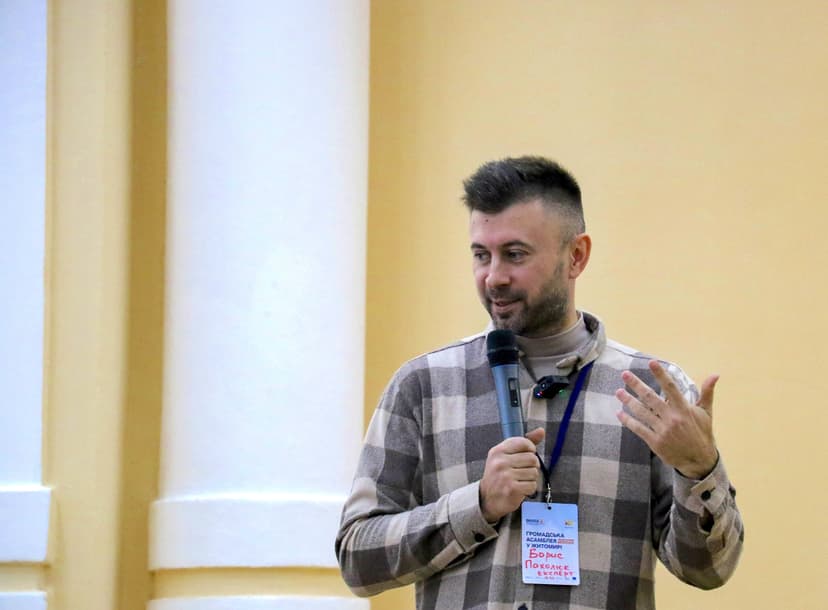
“We wanted to broaden the circle of Zhytomyr residents who take part in dialogue with experts and city administration staff. The Citizens’ Assembly format enables the involvement of people who have never participated in such processes before. It creates a space for genuine dialogue, where everyone’s opinion matters,” – said Borys Pakholiuk, Director of the Municipal Institution City Development Agency.

“Each of us encounters transportation every day: some take the trolleybus, some drive, some walk, some bike. And these are very different–sometimes even opposing–interests that the city’s transport policy must consider. The Citizens’ Assembly format helps people better understand these interests and search for common ground,” – noted Oleksandra Keudel, Director of the Center for Democratic Resilience at the Kyiv School of Economics.
Participants worked in small groups, received expert consultations, and analyzed examples from Ukrainian and European cities. Later, they developed a list of recommendations concerning improvements to public transport, safer intersections, the arrangement of sidewalks and pedestrian crossings, and the creation of convenient conditions for cyclists and drivers. Afterwards, participants prioritized these recommendations based on their importance and feasibility for implementation within 1-2 years and 3+ years.
The first day of the Assembly unfolded in a reserved atmosphere, as most participants did not know what to expect. However, from the second day onward, discussions grew more active: emotions surfaced, disagreements arose, and debates emerged. People began interacting, listening to one another, and seeking compromises.

“The impressions are extremely positive. We saw engagement grow with each passing day. People stopped being passive listeners and began asking questions, defending their positions. That is the strength of such formats: they cultivate a culture of interaction between authorities and citizens,” – emphasized Illia Tkachenko, Coordinator of the Citizens’ Assembly from the Kyiv School of Economics.

“The democratic engagement of Zhytomyr residents shows that Ukraine is ready for the European Union,” – remarked Prof. Hans-Liudger Dienel, Head of the Department of Work, Technology, and Participation at the Technical University of Berlin.
“My impressions are the most pleasant, the most positive. It’s my first time taking part in such an event, but I already know it won’t be the last. It’s truly engaging, inspiring, and uplifting. You realize that we, ordinary citizens, can influence the resolution of important issues for the city,” – said one of the Assembly participants, Zhytomyr resident Svitlana Kovalchuk.
“It’s great to have the opportunity to express your thoughts, hear others, and reach a shared position. It’s a wonderful experience. With each hour, people felt more involved and expressed their ideas more freely. And that’s great, because this is exactly how democracy works. People learn to make decisions and understand their consequences. It means the community becomes more aware and more prepared to shape solutions together,” – said Tetiana Komareus, a 19-year-old student.
“I was very pleased to be involved in this process as a representative of the public. Together with colleagues, we selected the topic. It was an active – even heated – process. It’s great that people engaged so actively. Everyone was energized and genuinely cared. Participants aren’t building unrealistic expectations about implementing every proposal; they’re trying to assess objectively what is feasible. Any format of community engagement – public hearings, working groups, expert involvement – is extremely important,” – said Kyrylo Onatskyi, head of a non-governmental organization and member of the Assembly’s advisory committee.

“The successful development of realistic recommendations in the field of sustainable urban mobility shows that the Citizens’ Assembly format works. I hope it will spread across Ukraine,” – said Kerstin Lücker, Head of the Participation Unit at the Department of Work, Technology, and Participation at the Technical University of Berlin.
Nineteen recommendations considered feasible within 1–2 years were put to a vote. Fourteen of them were approved. For example, implementing at least one completed cycling route under the city’s cycling concept; ensuring uninterrupted operation of traffic lights (alternative power sources, solar panels); supporting Association of Apartment Owners and Housing Construction Cooperative in formalizing adjacent territories for their needs, including parking. In the near future, participants of the Citizens’ Assembly will present these recommendations to the city council for implementation.
The citizensʼ assembly in Zhytomyr took place as part of the BRIDGE project, funded by the European Union.
Photograph by Ihor Kostash

